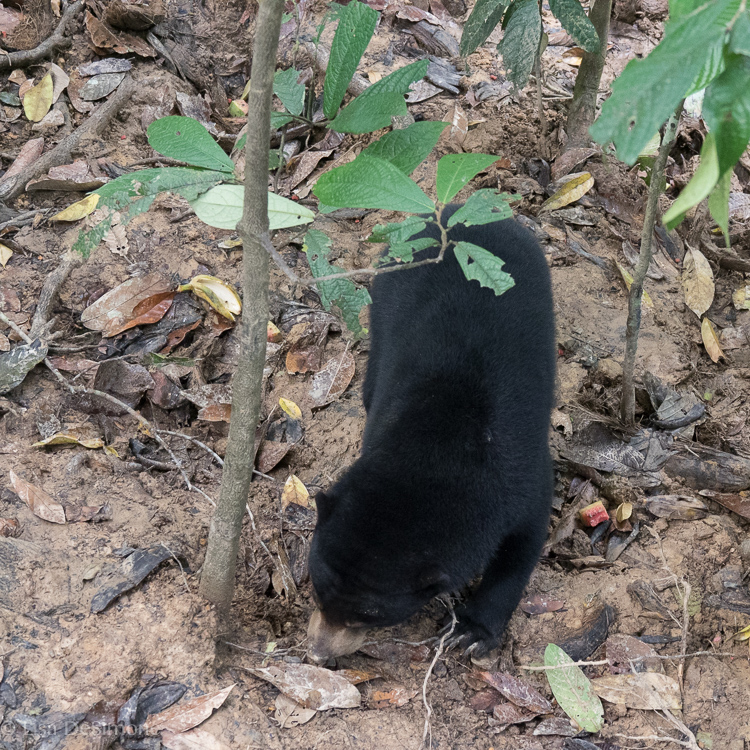5 Tips For Seeing Orangutans in Borneo
/I don’t like monkeys, but I love apes! I have visited the mountain gorillas in both Uganda and Rwanda, and I really wanted to see wild orangutans. Through my research, I learned that orangutans are the only apes that live outside of Africa and are only found on two islands in the world - Borneo and Sumatra.
Wild orangutan in Borneo
Given that I was going to be traveling in SE Asia, I decided to head to Borneo. To be honest, before I made this decision, I wasn’t positive where Borneo actually was located…and I’m pretty sure I thought it was it’s own country! In fact, Borneo is located in the Pacific Ocean, southeast of the Malay Peninsula, and is the third largest island in the world (about 2x the size of Germany). Government-wise, part of Borneo is Indonesia, part Malaysia, also a tiny little piece is the independent country of Brunei.
The orangutans in Borneo are found in Malaysian Borneo, in a region called Sabah, in the northern part of the island. It just so happens that one of the best dive sites in the world, Sipadan, is also located in the same general part of Borneo. I WAS SOLD!
I really enjoyed my time in the rainforest and would highly recommend a visit. Borneo has a lot more going for it than just apes and SCUBA diving, but these were the two things I focused on while I was there. That said, if you have the time and inclination, I suggest spending more time in Borneo than I did: from what I gather, there’s a lot more nature to be seen and some great hiking.
A couple that I met told me that Sumatra offers the ability to see loads of orangutans in a less controlled environment - you can actually walk through the jungle freely! I’m not sure if that’s true or not, but it’s definitely something I plan to look into for the future. But for now, here are 5 tips to help you plan your rainforest adventure to see orangutans in Borneo.
Wild orangutan in Borneo
1. BOOK A FLIGHT TO SANDAKAN AIRPORT
As a reminder, the orangutans are found in Malaysian Borneo, in a region called Sabah. Sandakan is the closest airport to where you want to be. It’s a short flight from Kuala Lumpur on mainland Malaysia or from Kota Kinabalu (which people always refer to as KK), another popular destination in Borneo. Check both Malaysia Airlines and Air Asia for flights.
2. STAY IN SEPILOK, NOT THE TOWN OF SANDAKAN
The Sepilok Orangutan Rehabilitation Centre is where you will go to actually see the orangutans - it is located in the area simply known as Sepilok, a 30 minute taxi ride from the airport. There are a variety of places to stay close to the airport in and around Sandakan, however, two resorts are a 5 minute walk from the Centre itself: the Sepilok Jungle Resort and the Sepilok Nature Resort. I suggest staying at one of these resorts, as it’s much more convenient to be able to walk to the Rehabilitation Centre than to worry about arranging transport every time you visit. Also, you can also walk to the Bornean Sun Bear Conservation Centre (BSBCC) and the Rainforest Discovery Center from either resort.
I stayed at the Sepilok Nature Resort and highly recommend it. The location is obviously a huge plus, but the resort itself is also very nice. The rooms are actually chalets scattered throughout the property, in the rainforest, encircling a lake. My chalet was huge, with a large king size bed, A/C, a big shower, and a nice hammock on the porch. I would definitely recommend paying for a room with A/C - the rain forest was extremely hot and very, very humid when I was there. The A/C was a lifesaver!
My chalet at the Sepilok Nature Resort in Borneo
The resort is quiet and relaxing. The walkways around the resort are kept clear and the views are just stunning. The outdoor restaurant and communal areas are lovely and make you feel as if you are completely immersed in the 'jungle' - you can sit overlooking the water, listening to the incredible sounds of nature. The onsite restaurant offers a variety of food for breakfast, lunch and dinner (and serves alcohol as well), and is situated right on the lake. The food to me was average, but they did serve a variety of made-to-order veggie and fruit juices and some nice smoothies, which I really appreciated.
Sepilok Nature Resort, Borneo
3. PLAN TO SPEND AT LEAST THREE DAYS
As I mentioned, the Sepilok Orangutan Rehabilitation Centre is where you will go to see the orangutans. Opened in 1964 as the first rehab center for rescued orphaned orangutans, the work being done there is vital to the survival of this threatened animal. I was stunned to learn that the wild orangutan population in Borneo has declined by 100,000 in the past 16 years...that’s half of the population, either killed or removed, between 1999 and 2015. Habitat loss was a major reason, although there are also direct killings (for God knows what reasons.) The orangutan has the longest dependence on it’s mother of any animal in the world. An orangutan mother will nurse it’s child for about six years. A young female will stay close to its mother until it’s teens, observing motherly skills as it watches it’s younger siblings being raised by the mother. At the Centre, the orangutans are taught to survive again in the wild and are released once they are ready.
The orangutans are fed bananas twice a day (at 10am and 3pm). Your entry ticket will cover admission for the entire day, so definitely plan to visit both in the morning and the afternoon. While these are not the only times you might come across the orangutans, they do provide your best chance. Another good reason to stay nearby is that you can walk back to the resort and get some food, water and enjoy the A/C in between feedings!
Monkey-ing around during feeding time at the Sepilok Organgutan Rehabilitation Centre in Borneo Malaysia
My advice is to arrive when the Centre opens, which is an hour before feeding time. You cannot bring bags or backpacks of any kind inside: lockers are provided for your things. Once you store your bags etc. you can visit the outdoor nursery, which is fun to see once (the viewing area is behind a glass wall, so good photos aren’t really possible). Next, I suggest heading to the feeding platform about 30 minutes before the actually feeding time for two reasons: 1) it can get quite crowded and you want the best spot to watch and take photos and 2) I had a one-on-one encounter with an orangutan while I was on the walkways heading to the platform early, and it was nice to have a few minutes alone with this amazing creature!
What a surprise to come across this guy while I was walking alone on the paths of the Sepilok Orangutan Rehabilitation Centre
I visited the Sepilok Orangutan Rehabilitation Centre on two separate days: so that was 4 times and each encounter was different. Once there were only a few orangutans who came to feed, and once there were none. While that might be disappointing to the visitors, it’s actually a good thing because it means that the orangutans are bored with just eating bananas and are learning to fend for themselves in the wild! I spent 4D/5N in Sepilok and could have spent one less day and had still been happy. That said, it did rain buckets one day, so having extra time there allowed me the luxury of spending that stormy day doing nothing but reading on my veranda.
4. VISIT THE NEARBY BORNEAN SUN BEAR CONSERVATION CENTRE
On the days that I was not visiting the orangutans, I visited the Bornean Sun Bear Conservation Centre - aka the BSBCC (located directly across the road) and the Rainforest Discovery Center (which was only a 15 minute walk). It’s definitely worth a visit to see the cute little sun bears: they are the smallest bears in the world and are only found in Southeast Asia. These bears' existence is also under attack -- they continue to be threatened by forest degradation, illegal hunting for bear parts and poaching to obtain young cubs for pet trade. Many people provide leads as to sun bears that they have seen in threatened situations, and the BSBCC rescues them: there are currently 42 rescued ex-captive sun bears residing at the Centre. The facility includes large forest enclosures to provide a natural environment suited to the needs and welfare of the sun bears and facilitate their rehabilitation back into the wild. I was unable to get any really good photos of the bears, as they were keeping themselves quite busy and hidden. As you can see by the red line around his abdomen in the image below, this poor little guy was obviously chained up before arriving at BSBCC. So sad!
An ancillary reason to visit is that you never know you might meet while there. As I was walking on the walkway to enter the Sun Bear Centre, I came across this cheeky little guy on the walkway into the Sun Bear Conservation Center. Several people came along the walkway, but I was the only person who seemed to have patience enough to stick around for more than five minutes — and I was so glad I did. It was as if this orangutan was posing for my camera, then he proceeded to climb into the trees and put on quite a show! Scroll through the slideshow to see all the images of this funny guy - it was my favorite encounter of my entire time in Sepilok
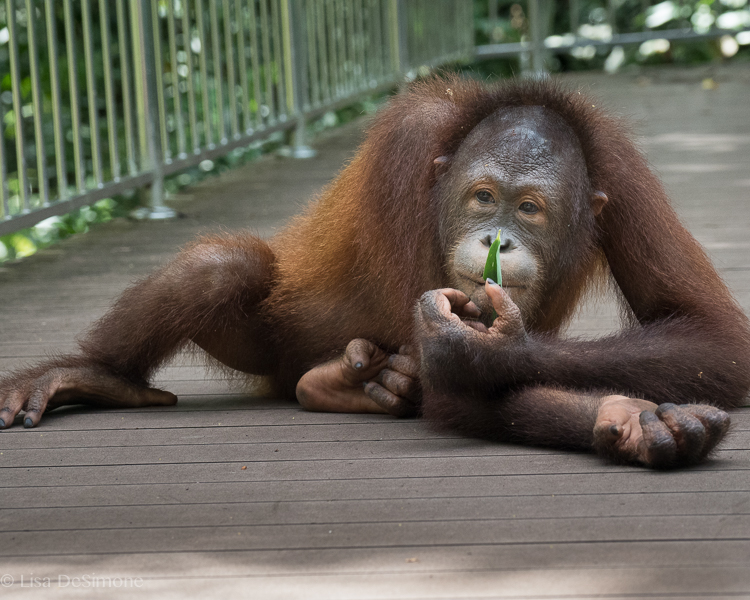
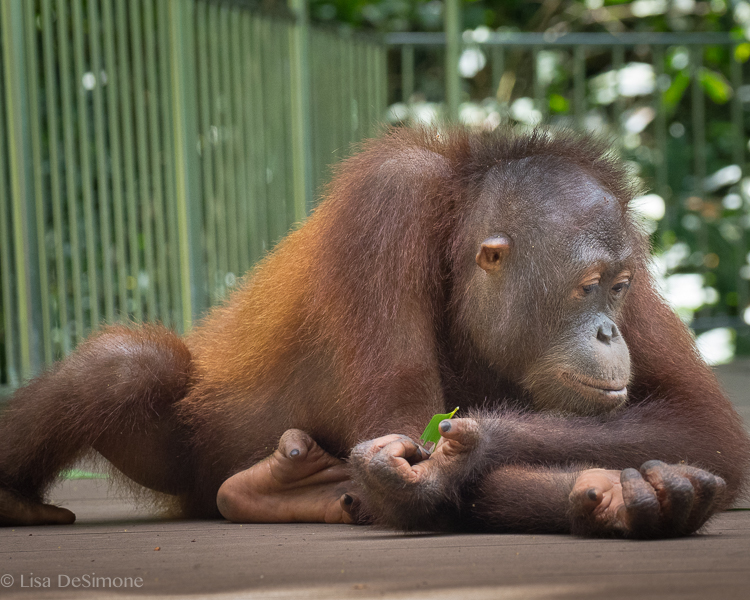
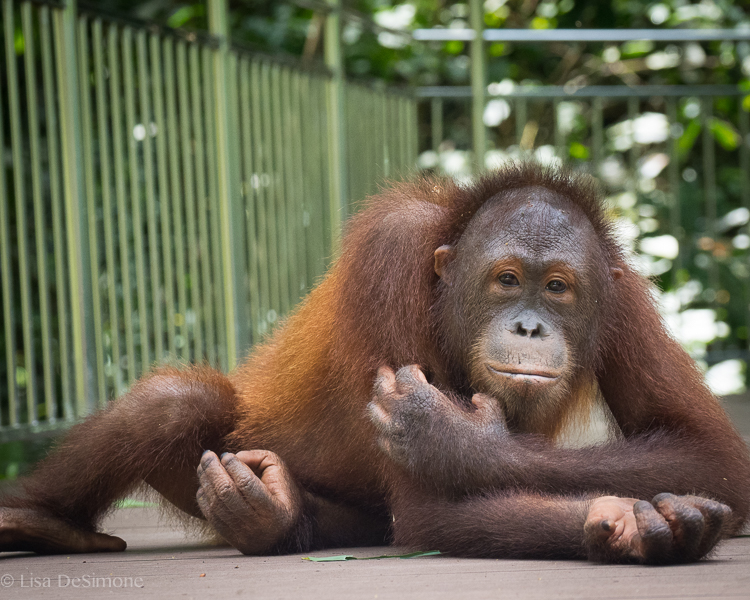

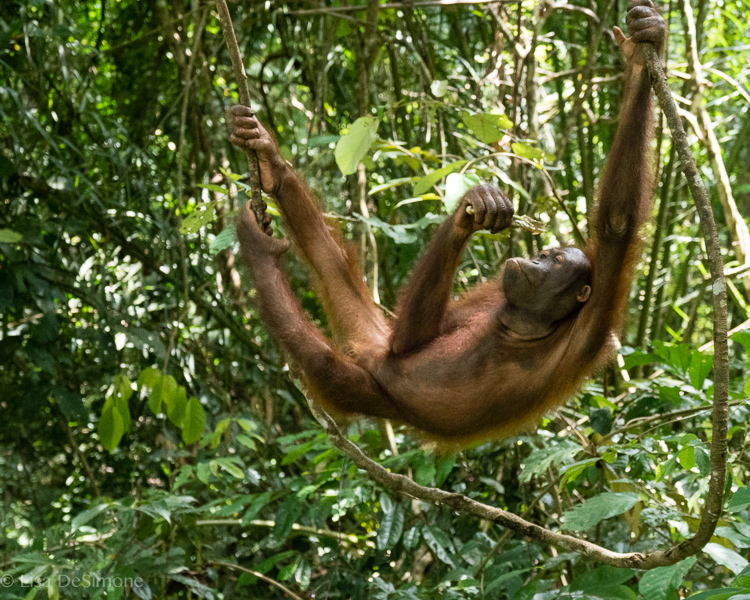
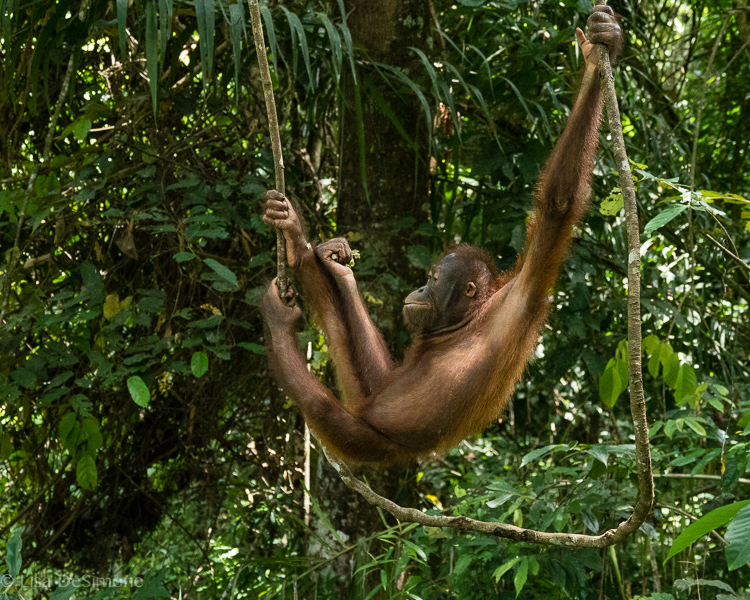
5. REMAIN RESPECTFUL AND KEEP YOUR DISTANCE FROM THE ORANGUTANS
Most people can’t be trusted with wild animals: they lose all sense of logic and get too close or turn their backs to them in order to take a selfie. Always remember that these are wild animals and you cannot predict their behavior. While they might seem cute and funny to watch, a sudden move on your part might cause them to feel intimidated and act aggressively. Always follow the instructions from the rangers and keep your voice low - or better yet, silent!









